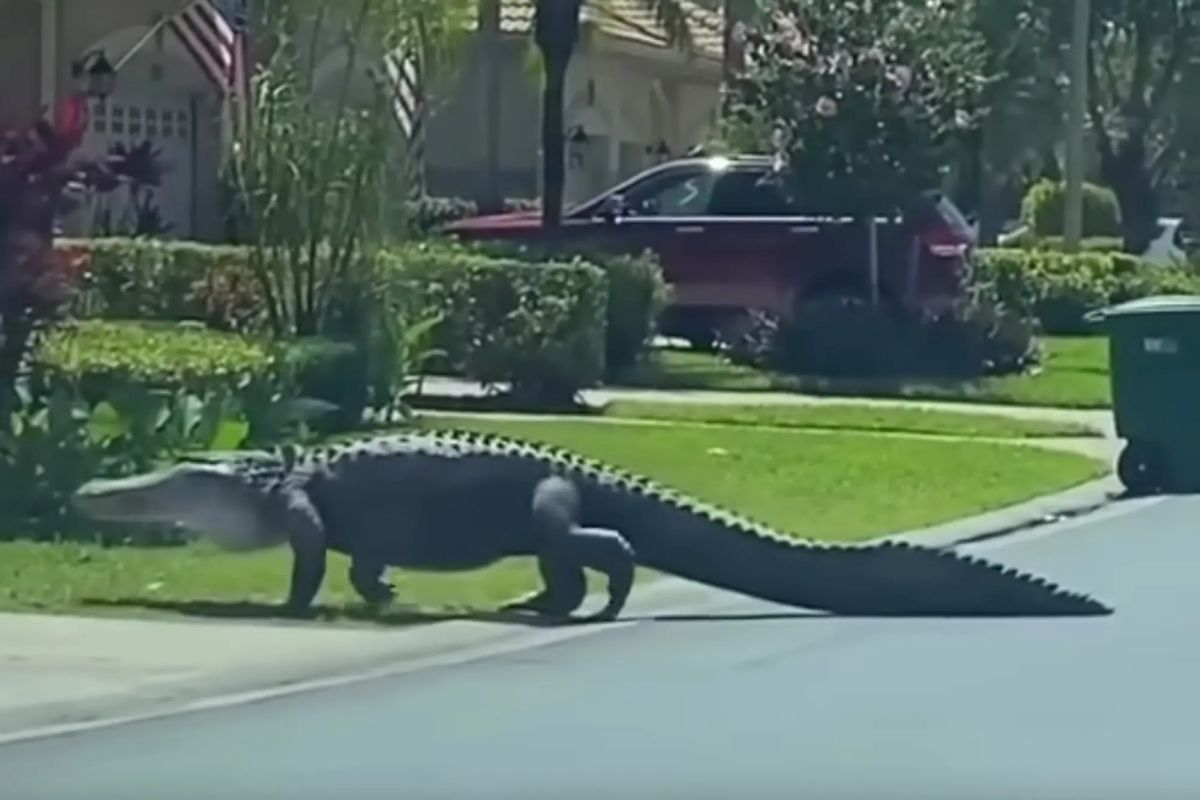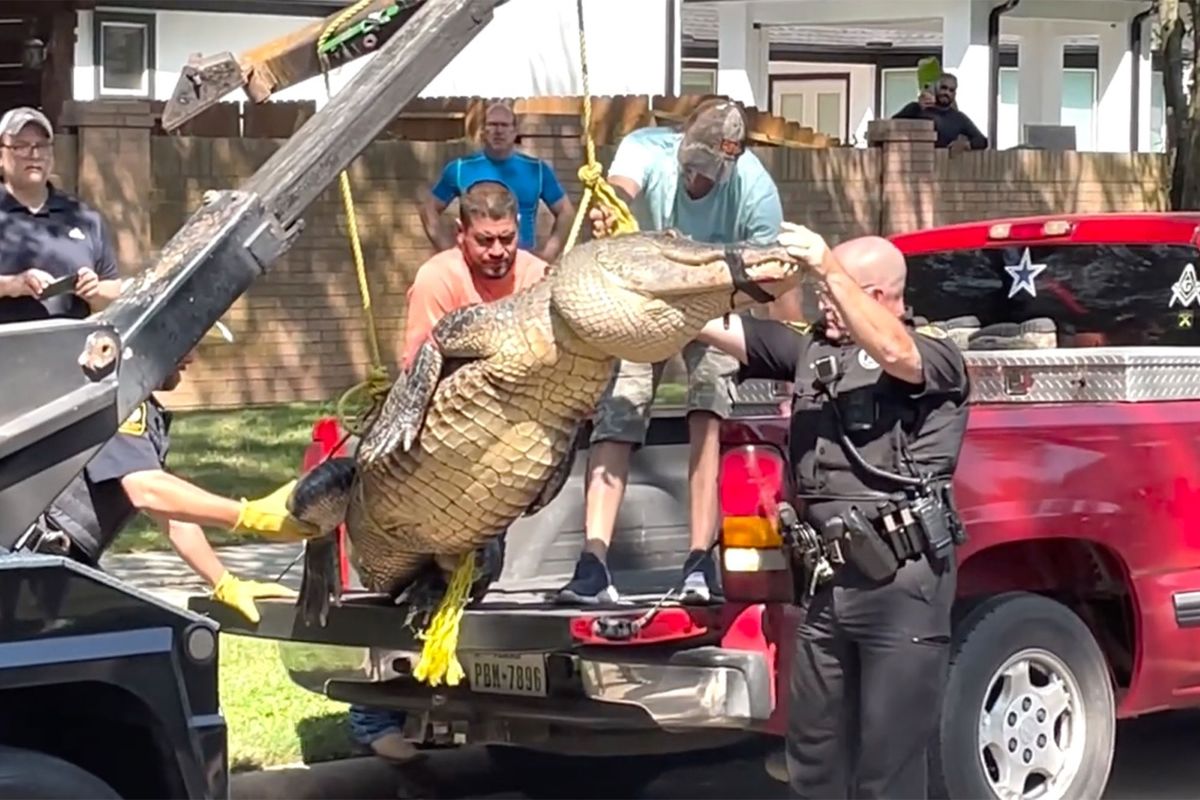
Watch short for this article (5 slides)
Living Alongside Leviathans: Understanding and Safely Navigating Urban Alligator Encounters
The sight of an American alligator basking on a golf course fairway or drifting through a suburban retention pond is becoming increasingly familiar, particularly in regions like Florida, Louisiana, and other parts of the Southeastern United States. While these ancient reptiles are integral parts of their native ecosystems, their growing presence in human-dominated landscapes necessitates understanding their behavior and adhering to strict safety protocols. This article provides an in-depth look at why alligator encounters are rising, debunks common myths, offers highly specific safety guidelines, and explains the proper procedures for reporting potentially problematic alligator sightings, ensuring both human safety and respect for these protected animals.

Behind the Sightings: Why Alligators Venture into Urban Spaces
Alligators appearing in unexpected places isn't random; it's driven by a confluence of ecological and human factors:
- Habitat Alteration and Fragmentation: This is arguably the primary driver. As human development expands, particularly residential construction and associated infrastructure (roads, canals, golf courses), vital alligator habitats like freshwater marshes, swamps, rivers, and lakes are reduced, fragmented, or altered. Alligators are forced to utilize remaining or newly created water bodies, such as stormwater ponds and canals, bringing them into closer proximity to people.
- Natural Dispersal and Seasonal Behavior: Alligators naturally move, especially during certain times of the year.
- Mating Season (Spring): Primarily April through June, males often travel significant distances searching for mates, sometimes crossing roads or ending up in yards.
- Nesting Season (Summer): Females become highly protective of their nest sites, typically mounds of vegetation near water, and may exhibit increased defensive behavior if approached.
- Dispersal of Young: Juvenile alligators disperse to find their own territories, which can lead them into less traditional habitats.
- The Peril of Human Feeding (Intentional or Unintentional): This is a critical factor influencing alligator behavior and risk. When people feed alligators—whether deliberately tossing food or indirectly by leaving pet food out or discarding fish scraps near water—the animals lose their innate wariness of humans. They begin associating people with food, making them bolder and more likely to approach populated areas, docks, and shorelines. **This is illegal in many states, including Florida, and incredibly dangerous, often resulting in the alligator needing to be removed and euthanized.** (Florida Fish and Wildlife Conservation Commission - Living with Alligators).
- Extreme Weather Events: Heavy rainfall, flooding associated with tropical storms or hurricanes can cause water levels to rise dramatically, connecting previously isolated water bodies and allowing alligators to disperse into newly inundated residential areas, garages, or even homes.
- Opportunistic Behavior: Alligators may simply be seeking essential resources – basking spots (they are cold-blooded and need sun to regulate body temperature), new food sources, or less crowded territory. Urban water bodies can offer these.
Safety First: Concrete Rules for Alligator Encounters
Coexisting safely with alligators requires constant vigilance and adherence to specific safety rules. General caution isn't enough; precision matters.
"Never feed an alligator and keep your distance. Alligators are naturally wary of humans, but may lose that fear when fed. When fed, alligators learn to associate people with food and may become aggressive." - Florida Fish and Wildlife Conservation Commission (FWC)
- Maintain Significant Distance (The 60-Foot Rule): While 20 feet is sometimes mentioned, wildlife experts, including the FWC, strongly recommend staying **at least 60 feet (approximately 18 meters)** away from any alligator, regardless of its size. They can launch surprisingly fast attacks over short distances on land (bursts up to 11 mph, though often cited higher anecdotally) and are powerful swimmers. Give them ample space.
- Absolutely NEVER Feed Alligators: Reinforce this rule relentlessly. Feeding is dangerous, illegal in many areas, and often seals the alligator's fate. Secure garbage cans and do not leave pet food outdoors, especially overnight. Clean fish or dispose of scraps away from the water's edge.
- Supervise Children and Pets Vigilantly:
- Keep children under constant, direct supervision when near *any* body of freshwater (lakes, ponds, canals, rivers) in alligator territory.
- Keep pets on a short leash (maximum 6 feet) and *away* from the water's edge. Alligators perceive small animals as potential prey. Never allow pets to swim or drink in waters known or suspected to contain alligators. Consider fenced yards as a safer alternative for pets.
- Swim Safely and Responsibly:
- Only swim in designated swimming areas during daylight hours. Alligators are most active between dusk and dawn.
- Never swim alone in freshwater habitats in alligator country.
- Avoid swimming in areas with dense aquatic vegetation where alligators can hide easily.
- Be Aware When Walking Near Water: Stay alert, especially during dawn, dusk, and nighttime hours when alligators are most active. Walk pets away from shorelines.
- If an Alligator Approaches on Land: Back away slowly and deliberately. Do not run wildly or make sudden movements that could be perceived as threatening. Give the alligator space and a clear path to retreat, which it will usually do.
- Do NOT Attempt to Handle, Capture, or Relocate: It is illegal and extremely dangerous for untrained individuals to attempt to capture or move an alligator. Only state-licensed nuisance alligator trappers are authorized to handle these situations.
Knowing When to Call for Help: Reporting Nuisance Alligators

Not every alligator sighting requires intervention. However, if an alligator exhibits threatening behavior or is in a location where it poses a significant risk to people, pets, or property, it should be reported.
- Define "Nuisance": In Florida, for example, an alligator is generally considered a nuisance if it is **at least 4 feet in length** AND believed to pose a threat to people, pets, or property. Smaller alligators are usually left alone unless displaying aggression.
- Who to Contact:
- Florida:** Call the FWC's Toll-Free Nuisance Alligator Hotline at **866-FWC-GATOR (866-392-4286)**. They administer the Statewide Nuisance Alligator Program (SNAP), dispatching contracted trappers. (FWC SNAP Program).
- Other States (e.g., Louisiana, Texas, Georgia, South Carolina):** Contact your state's specific Department of Wildlife and Fisheries or Natural Resources agency. They will have dedicated procedures and contact numbers for reporting nuisance wildlife.
- Local Authorities:** In some cases, local non-emergency police or animal control may be able to assist or direct you to the correct state agency.
What Information to Provide: Be ready to give the exact location, the estimated size of the alligator, and a clear description of the behavior that is causing concern (e.g., approaching people, basking on a doorstep, trapped in a pool).
Alligator Myths vs. Reality: Separating Fact from Fiction
Misconceptions about alligators can lead to unnecessary fear or dangerous complacency. Let's clarify some common myths:
| Common Myth | Scientific Reality |
|---|---|
| Myth: You should run in a zigzag pattern to escape an alligator on land. | Reality: This is false and wastes valuable time. Alligators are capable of short, fast bursts in a straight line (up to ~11 mph, sometimes faster bursts reported but not sustained). Your best escape is to run directly away as fast as possible. They tire quickly over distance on land. |
| Myth: Alligators are inherently aggressive and actively hunt humans. | Reality: Alligators naturally fear humans and typically avoid contact. Attacks are rare and usually occur when an alligator feels threatened, is defending its nest/young, is surprised at close range, or has been fed by humans and lost its natural fear (mistaking a person or pet for a food source). They are opportunistic predators, but humans are not typical prey. |
| Myth: It's okay to remove a small alligator from your property yourself. | Reality: False and illegal in many jurisdictions. American alligators are protected under federal and state laws. Attempting to capture even a small alligator risks serious injury (their bites can be severe and cause infection) and puts unnecessary stress on the animal. Only state-licensed professionals should handle them. |
| Myth: Alligators have poor eyesight. | Reality: Alligators have good eyesight, especially adapted for seeing both above and below the water surface simultaneously. They also have excellent night vision and a keen sense of hearing and vibration detection. |
Unusual Encounters: When Gators Show Up Unexpectedly
While often alarming, reports of alligators in unusual urban settings highlight their adaptability and the extent of habitat overlap. Stories abound of:
- Alligators finding their way into swimming pools (attracted to the water).
- Seeking shade or refuge under parked cars, especially during hot weather.
- Occasionally entering homes or garages, particularly after flooding or through unsecured pet doors.
- Being gently "swept" away from storefronts by authorities using brooms (usually smaller, less threatening individuals).
These incidents underscore the need for vigilance and securing potential entry points, but also demonstrate that often, the alligator is simply lost or seeking temporary refuge and poses no immediate threat if left alone and reported to professionals.
Conclusion: Fostering Coexistence Through Education and Respect
American alligators are a conservation success story, having recovered from endangered status. Their increased visibility in urban areas is a complex issue stemming largely from human expansion into their native habitats. While encounters require caution and adherence to strict safety protocols—chief among them maintaining distance and *never* feeding—panic is unwarranted. By understanding alligator behavior, respecting their space, taking preventative measures to secure homes and pets, and knowing when and how to contact wildlife professionals, humans and alligators can continue to coexist, albeit sometimes uneasily, in shared landscapes. Education and responsible human behavior are the cornerstones of ensuring safety for both species.